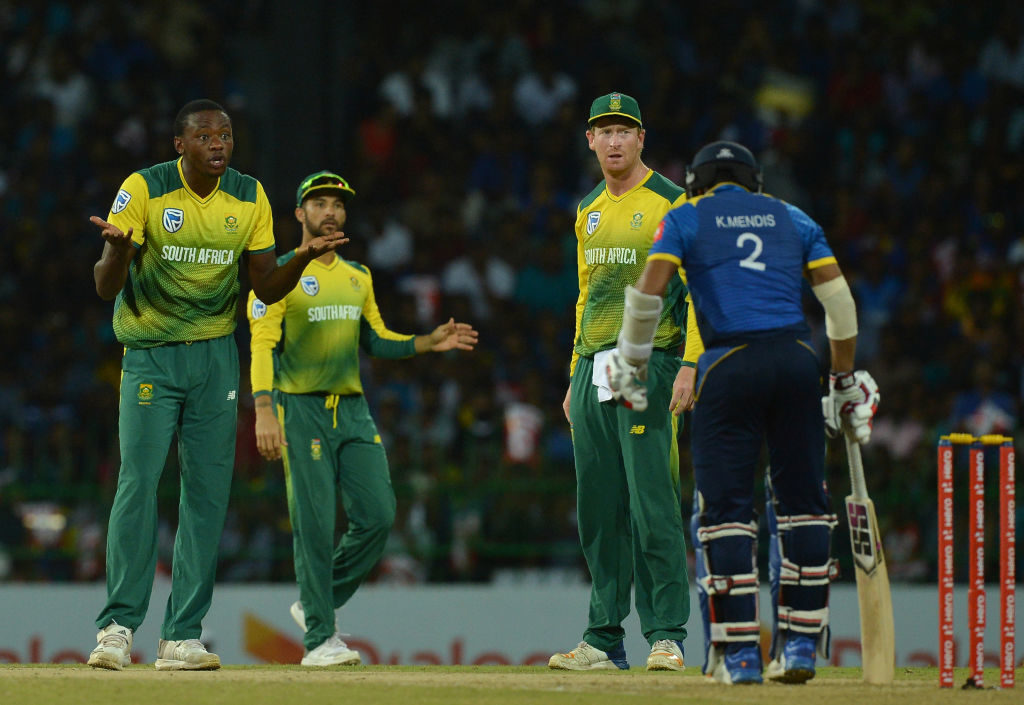The tour to Sri Lanka highlighted a flawed playing strategy from South Africa.
Having secured an unassailable 3-0 lead in the five-match ODI series, I implored the Proteas to maintain the winning momentum and secure a series whitewash against Sri Lanka. However, having claimed the ODI series, the Proteas’ mental release was in evidence.
South Africa suffered back-to-back ODI losses and slipped to a three-wicket defeat to the hosts in the one-off T20I. It was a poor effort by a talented team and the cricket played was a long way off being smart. When you change the playing personnel, your first-choice captain heads home due to injury and you bring your backup players in then, for them, it’s not about winning the series. Instead, it’s about cementing a place in the team, with the World Cup in mind.
The theory of ‘we have won the series, so it doesn’t matter’ should go out the window. I don’t believe anyone walks in to bat – or runs up to bowl – with that thought process. With at least five World Cup places up for grabs (according to Proteas coach Ottis Gibson), the players should have taken the opportunity to show that they are up for it at international level. The disappointing part for me is that the fringe players didn’t and, instead, succumbed to all kinds of pressure out in the middle.
I know World Cup conditions in the UK will be different to what was experienced on the subcontinent, but the way in which the Proteas batsmen got out and how they lost is worrying. The application and understanding of the moment left a lot to be desired. The message to the players from the coaching staff should have been: ‘Guys, there are places up for grabs; we are going to give you opportunities and need you to cement your places.’
Even in a losing cause, if you make runs or take wickets, you can give the selectors a good headache. However, I simply didn’t see fringe players putting their hands up and, instead, witnessed batsmen getting out due to poor shot selection with plenty of overs in hand.
The batting unit seems confused and in between styles of play. In my opinion, there is a muddled approach in terms of the tactical thought process within the batting unit at the moment. The Proteas coined the adage of playing ‘brave cricket’ a few seasons ago. However, maybe it’s time to convert it to ‘smart cricket’ – with less bravado and more brain.
I was really surprised by Gibson’s decision to appoint Quinton de Kock as captain for the final two ODIs. De Kock, 25, is already their wicketkeeper and opening batsman in white-ball cricket. The burden of the captaincy is not easy to carry, especially for a young player. The Proteas missed Faf du Plessis in terms of his leadership and ability in the middle order.
I would have gone for JP Duminy as stand-in skipper for the ODIs. The 34-year-old, who has retired from Test cricket, proved a revelation on this tour. I was really impressed with Duminy, who seems to be a rejuvenated player and he still has plenty to offer the Proteas in the shorter versions of the game. He is a good fielder, experienced batsman in the middle order and can fulfil the finisher role, which was evidently lacking for South Africa on their tour to Sri Lanka.
Gibson is on a learning curve with the Proteas and there are things he is still trying to figure out about his team. He is attempting to find the right pegs to put in the right holes and is looking at ways and means to get his management team going. It tells me that there is still confusion about what the team mix and order should be.
From the outside looking in, South Africa appear a very confused team at the moment and they are paying for that on the field.
PAT SYMCOX COLUMNS
Proteas must heed history lessons
Steyn still packs a mean punch
Faf more suitable for the role – Symcox
Lehmann created a terrible culture
Markram’s emergence a big boost for SA
AB put himself first, rather than his country
Photo: Ishara S. Kodikara/AFP/Getty Images







